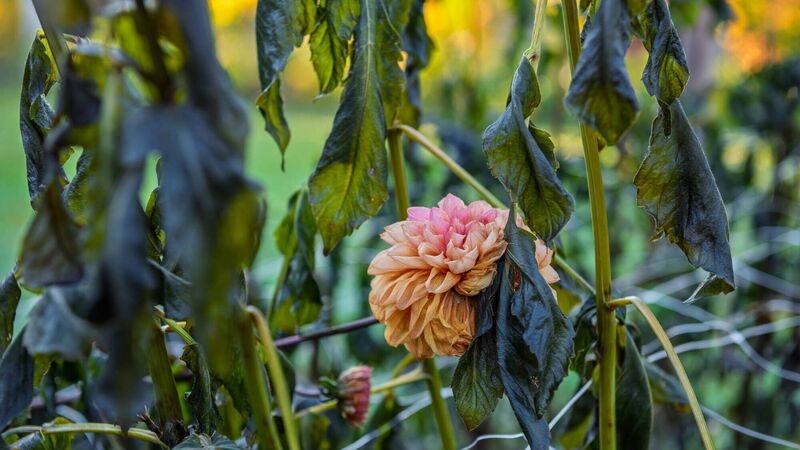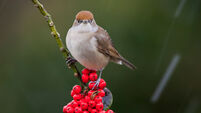Peter Dowdall: Frost signals season's end for certain plants. Here's how to manage their downtime

The frost has done what frost always does, signalling the end of the season for dahlias, writes Peter Dowdall. File picture
It happens every year on December 25, yet every year I am still hopelessly unprepared and in a panic in the last few days. Yes, I’m one of those people, cluttering up the shops on Christmas Eve with my entire list, often still unstarted. Mind you, I think I always get there in the end, or else I’ve got a very forgiving family.
The first real cold snap of the season always seems to catch us the same way, no matter how many years we’ve been gardening or how often we reassure ourselves that we’re ready for winter.
A few sharp days and nights of frost, like what we have had recently, the sort that turn lawns white and leave the water in the bird baths frozen, can make even the toughest gardener among us pause at the kitchen window and wonder what on earth the garden is going to look like once everything thaws.
In truth, most plants are far hardier than we give them credit for, and frosts and temperatures below zero, like the few days that we had recently, are rarely the disaster they may first seem.
One of the first things people notice after a frost is how droopy and miserable everything looks. Leaves collapse, stems bend and some plants look as if they’ve melted into themselves overnight. It’s not a pretty sight, but it’s also not a reliable indicator of long-term damage.
What you’re seeing is the result of frozen plant cells temporarily losing turgor pressure. Cast your mind back to biology classes of your schooldays. As the temperatures rise, many of those same plants right themselves and look perfectly content within a day or two.
Frost damage, when it’s genuine, usually shows up later as dark, mushy patches that don’t perk back up or as tips that turn brown and crisp, but it’s still important to remember that damaged sections don’t necessarily mean the whole plant is lost.
This is why pruning anything right now is a mistake, though the temptation is understandable. Pruning encourages new growth, and new growth is the very last thing you want in the middle of winter, as fresh, soft, new shoots are far more vulnerable than old stems, and if the weather turns cold again, as it surely will, you’ll only have created a bigger problem.
Leaving the foliage, even if it’s battered, actually protects the crown of the plant beneath. Think of it as a duvet, ugly perhaps, but warm and surprisingly effective. This applies even more so to the tender plants that people worry about most.
Dahlias, of course, have already had their final curtain call outdoors. The frost has done what frost always does, signalling the end of their season.
The real question now is whether to lift the tubers or leave them in the ground. In milder parts of the country, they often survive quite happily with nothing more than a thick covering of mulch or compost, while in colder locations, lifting and storing them somewhere dry is the safer route. If you are risking leaving them in the ground throughout the winter, just remember that they do not like saturated soil, so ensure that the area is well-drained.
Tree ferns are another plant that raises concerns after a freeze. They can be vulnerable to damage from low temperatures, but the key is protecting the crown, where the new growth emerges.
If you haven’t already stuffed some dry leaves, newspaper, or straw into that centre well, now is a good time to do it, especially with more cold nights likely to come. The scorched appearance of fronds after frost can be alarming, but that’s actually totally natural for tree ferns; those fronds were on their way out anyway. What matters is safeguarding next year’s new fronds.
Of course, the big question is what happens next. Will we see more frosty nights or the more typical wind and rain? The challenge isn’t so much the cold or the rain on their own, but the sudden transition between extremes.
Wet ground after a freeze is easily compacted, so avoid walking on lawns or beds unless you absolutely must. Soil structure is precious and takes a long time to repair once damaged.
The important thing to remember after a freeze is that the garden is not as fragile as it looks. Plants have been dealing with winter far longer than any of us have, and they have evolved to cope.
We don’t need to intervene at the first sign of a drooping leaf; the garden is resilient, and with a little patience and trust, your garden will come through this cold, wet, windy patch perfectly ready for another year.

- Got a gardening question for Peter Dowdall? Email gardenquestions@examiner.ie











